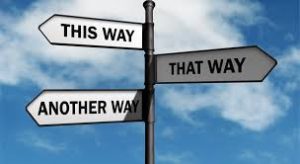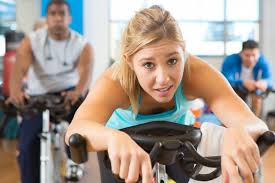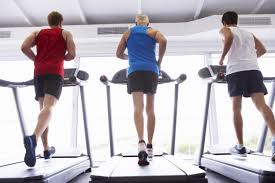So now you’ve measured and know your resting heart rate and have an idea on how to determine what your target heart rate should be during exercise. (See my post last week http://andreaarthurowan.com/2018/04/25/the-best-way-to-calculate-your-exercise-training-heart-rate/admin/).
Now what?
Setting some goals—
This is the exciting part. Where you decide what your exercise goals are. Spend some time thinking about this one. And consider your age, current physical condition, and what type of exercising you would like to do, and will stick with. Do you want to:
- Lose weight?
- Put on some muscle and have nicely contoured arms and legs?
- Tone up what you’ve got?
- Increase your lung capacity and improve your heart function?
- Maintain your current level of conditioning?
- Run a 5K, or triathlon?
- Increase your reaction time and power or speed?
- Just get stronger?
What fitness goal you choose will determine how you exercise, where you exercise, what you do for exercise, and what exercise heart rate you’ll aim for.
Conditioning, toning, power, or aerobic capacity—
As a general rule, for general conditioning goals, you will want to exercise at a heart rate level of 50 to 70%.
As we saw last week, for someone my age (60) and resting heart rate of 58, (don’t forget to use that as your base for proper calculations), I would want to exercise at a level that keeps my heart rate between 109 bpm and 129 bpm.
At the lower rate of 109 or even up to 120, I could maintain a reasonable exercise rate—like walking at a 3.0 mph walking rate—for two to three hours, or longer. As long my knees and feet hold out for me.
If, however, I want to work on power and strength, which I sometimes do, (for toning, muscle definition, and muscle power), I’d want to push my heart rate up to a higher level, say 80 to 90% of my heart rate maximum, again with my resting heart rate as a critical factor in the formula.
When I use the 80 to 90% range, and plug those numbers into the formula we covered last week, we arrive at a target heart rate range of 140 to 150. That’s a rate I wouldn’t be able to sustain for an indefinite period of time, though. In fact, I probably wouldn’t try to sustain it more than 20 minutes, if I were hitting a 140 – 150 bpm rate throughout the entire 20 minutes.
I could, however, go longer, if I were ramping my heart rate up and down as I exercised, as sometimes happens when I’m walking on the treadmill and increasing the ramp angle considerably to mimic hiking uphill and then lowering the ramp angle to a slight or flat grade.
Working up to your target level—
But even if you know what your target level should be, you may need to take it slowly and work up to your desired level. If you haven’t exercised for a while, are recovering from an illness, or you’re changing up your exercise program for some reason—because your goals have changed—you’ll want to work up to a level where your heart rate is being stressed a little but not so much that you have a difficult time breathing, feel weak, or can’t maintain that level of exercise for five to ten minutes. Or, after exercising, your heart rate takes longer than it should to come back to normal.
Again, if you’re just starting an exercise program, make sure your doctor is in agreement with what you want to accomplish and gives you the thumbs up on the program you’ve designed. She can also help you design one!

Where do you go from here?
I know all of this probably sounds a little—or a lot—vague, but as we progress, we’ll look at more specific exercise goals and see what a training program might look like for you. If you’re already on an exercise program, you might see some ideas here that will help you improve or stress yourself a bit more.
I forgot to provide an answer!
A couple of weeks ago, I asked if you knew which athletes typically have the highest VO2 maximums. I promised to give you the answer the following week—and then forgot! Many apologies for my forgetfulness!
The answer is: Cross-country skiers. They have HUGE lung capacities. One reason is the long distances they ski, but it’s also because they’re using nearly all of their bodies when they’re exercising at those long distances. It’s a grueling sport.
What’s coming up?
NEXT WEEK, “Workout Wednesdays” will be on hiatus. I’m heading to Philadelphia this weekend for an intensive writing/editing workshop with the Guideposts editors and eleven other writers; and my younger son graduates from college the following weekend.
I’m trying to take my own advice and live a balanced life!
So I’ll see you back here May 16!
Until next time, keep working on setting your goals!
Blessings,
Andrea
May you prosper in all things and be in health, just as your soul prospers (3 John 2).
Photos courtesy of Google Images



